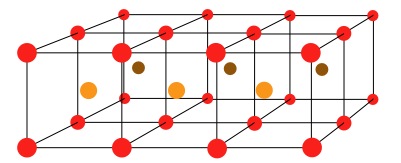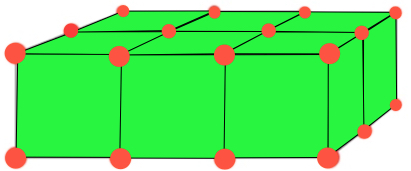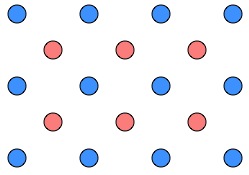Copyright © University of Cambridge. All rights reserved.
'3D Stacks' printed from https://nrich.maths.org/
Show menu
This activity may be used as a follow-on for those who have successfully worked at Doplication.
Let me help you visualise this representation of a 3D situation.
In this example of a 2 by 3 by 4 we see in the red balls, as two layers of 3 by 4.

These two layers together can also be viewed as representing 6 cubes.

In the top picture the centre of each cube is shown with a light/dark brown ball.
In Doplication you would have had;

which we called $4$ ? $3$.
In this activity it would be called something different involving $4, 3, 2$. Just for now I am going to use @, so the diagram above represents $4$@$3$@$2$.
I invite you to explore many such arrangements and find a way of recording your results.
You might like to just look at the arrangements that are like cubes - $3$@$3$@$3$ , $4$@$4$@$4$, $5$@$5$@$5$, etc.
As with most mathematics it's good to compare so maybe compare the results for squares in Doplication and cubes in 3D Stacks.